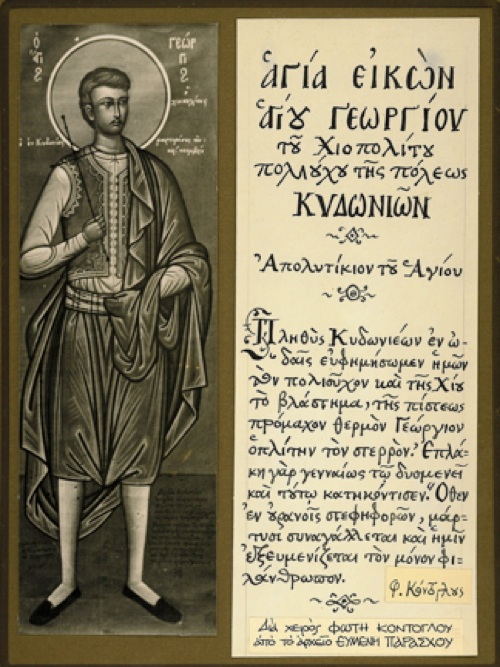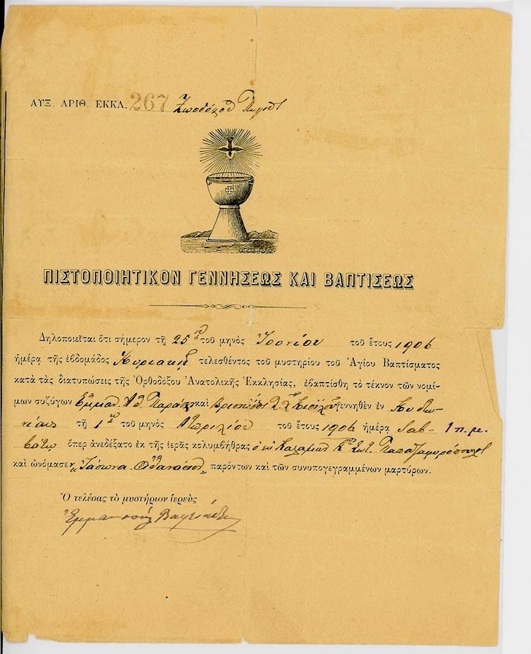6. Customs
Language
One key characteristic of the Kydoniates was their local dialect (ntopiolalia). Here are their most common deviations from mainland Greek:
--they eliminated the vowel from “-is” endings (i.e. Antonis would be Antons);
--“ai” and “e” sounds were pronounced “i” (petra would become pitra);
--“-i” at a word’s end would be eliminated (trapezi would become trapez)
--“-iko” endings would become “ko” (bakaliko would be bakalko)
--“kai” was “tsi” (aftos kai afti would be aftos tsi afti).
But probably the best known of their differences was their substituting the ending “-akis” (which in Greece indicated the diminutive of a noun/name) with “-eli” (moro would be moraki in mainland Greece but moreli in Aivali).
Holidays
On New Year’s Eve girls would place a piece of their Vasilopita slice under their pillow so they could dream of their future husband. On Feb. 6, St. Haralambos day, families would take gifts to the city’s orphans and hang a piece of cloth on the church’s tree for good luck.

The May wreaths of the Aivaliote houses would include a head of garlic for good luck and the Ascension celebration dictated that men go into the sea up to their knees with their pants rolled up and count 40 waves, also for good luck.

St. John the Theologian’s day (May 8) was marked with celebrations of “klidonas,” an ancient word meaning “oracle.” Neighbors would gather is someone’s yard, take a clay pot, fill it with water and put in small tokens (i.e., buttons, safety pins, etc.). A girl then would recite poems as she picked the tokens, one at a time, from the pot and gave it to a participant whose luck would be determined by it. Also, in an effort to throw bad luck away, on the eve of St. John’s residents would collect anything that would burn, start fires in the neighborhood’s streets and jump over the fires throwing stones into them as they did. (Right, Aivaliote lira.)

http://igaiolos.blogspot.com/2008/01/blog-post_23.html
Courtship
Since young Aivaliotes would meet in public officially only three times a year (during Holy Week and during the celebrations of St. John and the Dormition of the Theotokos), most marriages were arranged. Matchmakers carried messages between families, and when an understanding was reached the groom’s family visited the bride’s and she served the guests. If the groom put a gold coin on the serving tray the relationship would continue. A week later the visit was returned and, if no objections were raised by either party, two weeks after that rings would be exchanged in an engagement ceremony presided over either by a priest or a respected family elder. A week later the bride would visit her future in-laws, who would give her the family rings (mother) and earrings (father). Other relatives might have added watches and brooches. On the Friday preceding the Sunday wedding the bride’s friends would come to see the dowry and on Saturday they’d prepare the “boubounieres.”
Below, Kato Panagia birth and baptismal certificate, 1906
